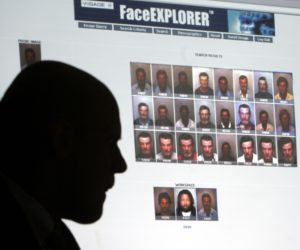At some point, federal counterterrorism programs that fund local police forces have become more about surveillance of US citizens than ferreting out international terrorists. How do American taxpayers feel about footing the bill for spying on themselves?
 Balancing the critical need to protect Americans from terrorism — international or home-grown — without invading citizens’ rights to personal space is no easy feat. More often than not, the responsibility falls to local law enforcement to make the call. After 9/11, national security took on a much broader meaning. The focus expanded from al Qaeda in Afghanistan and the Islamic State of Iraq and Syria (ISIS) spreading terror around the globe to include domestic threats.
Balancing the critical need to protect Americans from terrorism — international or home-grown — without invading citizens’ rights to personal space is no easy feat. More often than not, the responsibility falls to local law enforcement to make the call. After 9/11, national security took on a much broader meaning. The focus expanded from al Qaeda in Afghanistan and the Islamic State of Iraq and Syria (ISIS) spreading terror around the globe to include domestic threats.
It is a slippery slope from obtaining a vital understanding of the comings and goings of would-be terrorists to intrusive spying on Americans going about their daily business. Unfortunately, many police departments are well down that incline. Since the 9/11 attacks, a Federal Emergency Management Agency (FEMA) program funded in the 2002 federal budget has provided approximately $28 billion in grant money to states and communities to counter domestic and international terrorism at the local level. However, that “[g]rant money meant to help cities prepare for terror attacks is being spent on surveillance technology for US police departments, a new report shows,” Tate Ryan-Mosley wrote in the MIT Technology Review. Moreover, it has been put in place without community knowledge or approval.
Report Identifies Police Spying on Community
Ryan-Mosley cited “DHS Open for Business: How Tech Corporations Bring the War on Terror to Our Neighborhoods,” a report published by the Action Center on Race and the Economy (ACRE), which offered a well-researched cautionary tale worth taxpayers’ attention.

(Photo by Mike Adaskaveg/MediaNews Group/Boston Herald via Getty Images)
Alarming is the extent to which some police departments have implemented facial recognition software, ostensibly to identify known terrorists. Unfortunately, the software casts a wide net, gathering in the unsuspecting. Also, the development of extensive databases to identify potential terrorists snags many others in the process. “This public and private sector data includes surveillance camera networks, telecommunications, facial recognition, controversial private companies’ databases and predictive policing software, and government databases,” according to ACRE. What is more troubling is that “New York City’s police department is monitoring citizens using cameras and facial recognition software developed in China. The surveillance tools are identical to those used in Sky Net in China, the largest video surveillance system on Earth, Chinese government research institutes and a company involved in the project said,” Stephen Chen reported for South China Morning Post.
Citizens Need to Approve Community Surveillance
Recent legislation has been targeted to bolster police departments across the country. “The American Rescue Act included $350 billion for financial support that, in part, is designated for ‘state, local, territorial, and tribal governments to … put more officers on the beat,’” a Benchmark Analytics report explained. However, it is likely that money will be invested in more surveillance technology without the community’s awareness.
Americans want to be safe, but communities may want to draw the line on video surveillance tracking citizens’ every move. Striking a balance between national/local security and personal privacy is tricky. Police and state law enforcement should let the people decide.
The views expressed are those of the author and not of any other affiliation.
Do you have an opinion about this article? We’d love to hear it! If you send your comments to [email protected]ibertynation.com, we might even publish your edited remarks in our new feature, LN Readers Speak Out. Remember to include the URL of the article along with your name, city, and state.
Please respect our republishing guidelines. Republication permission does not equal site endorsement. Click here.

